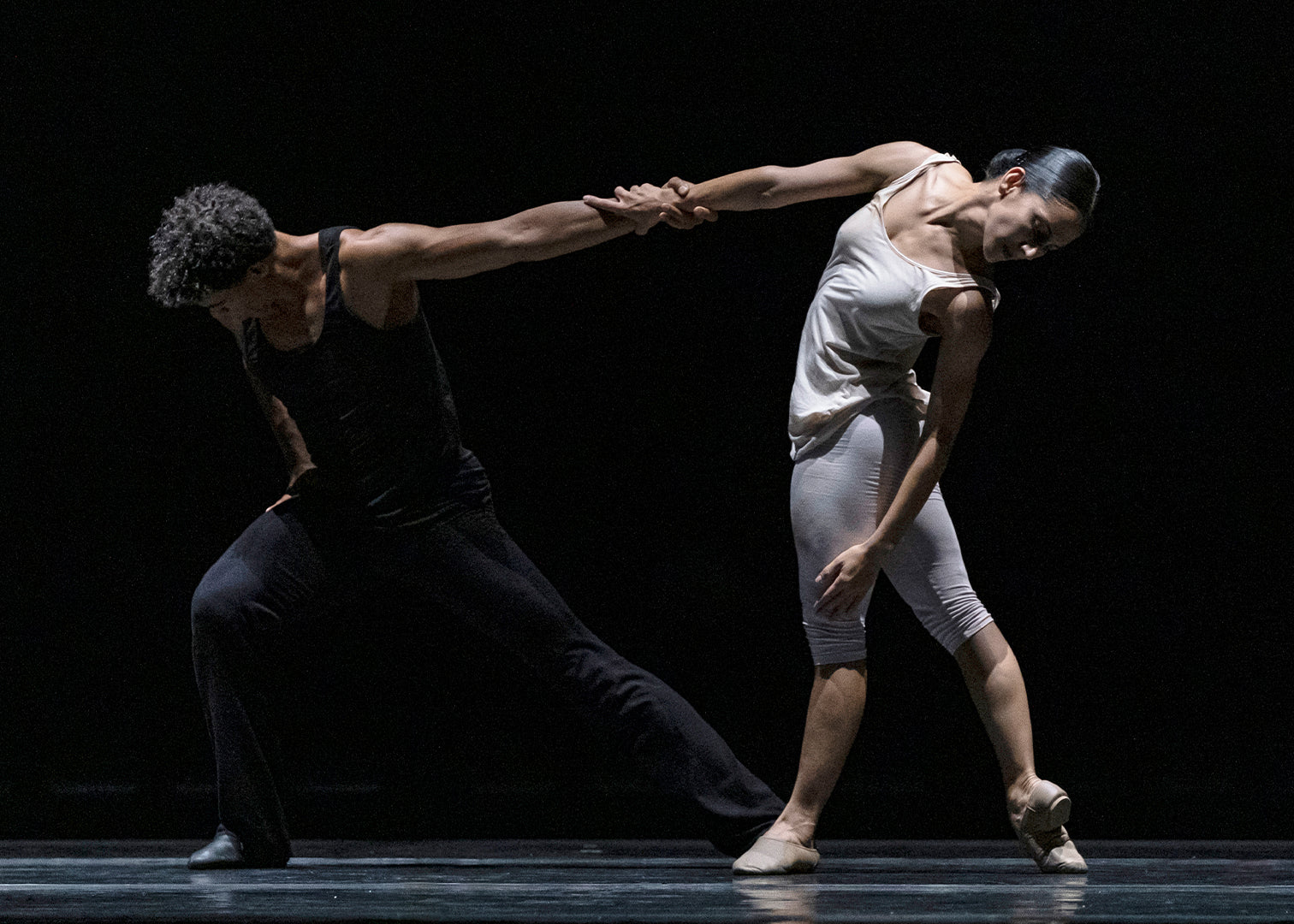As the beautiful and talented, but ultimately doomed Victoria Page, Ashley Shaw, Bourne's muse, is an inspired choice for the role made famous by Moira Shearer on the silver screen—a combination of innocence and smarts. She's nobody's shallow little princess, and every bit as wilful as she is gifted, with a fine foil in the gorgeous, tender Dominic North as her lover, struggling composer Julian Craster, who gets a beautiful piece of his own choreography examining his epiphany in the creative process.
When the shadowy marionette child figure at the outset emerges from sepia-dipped curtains (which turn throughout, representing the tonal shifts) it is as a foreshadowing of evil portents, sealing Page's fate. She retains her dignity, always en pointe and on point, even when the cursed shoes keep her dancing to the brink of collapse, or when she is flung around by a wonderfully deviant Sam Archer as the demented Machiavellian impresario Boris Lermontov.
It's the campy wit and Gothic interludes that Bourne juxtaposes effortlessly, from the stiff ennui of the ballroom with its conspicuous consumption and endless Rococo prancing among the upper classes, to the jazzy street scenes which feel brooding, and darkly sexual, with legs popping out at angles, a signifier of Page's burgeoning womanhood and the increasing sense of voyeurism. It seems that someone is always watching at shadowy corners, always judging. One lovely scene, an unlikely pas de deux between Page and a Priest, seems to imply that she is beyond redemption, that in signing her life away to dance is something akin to a Faustian pact in her own blood. In Bourne's hands, red ballet shoes are both a poisonous fairytale apple (and this is still very much a fairytale, albeit a somewhat adult one) and disapproving religious symbol of 'the fallen woman' alike.
Indeed, “The Red Shoes” is steeped in the traditions of MGM, as opposed to the restraint of the 1948 Powell and Pressburger film, augmented by the swooning icy soundtrack selections by Bernard Herrmann and Duncan McLean's gorgeously inspired, ethereal multimedia. There is no Hollywood cliché left unskewered, from the beach beauties, who are part Charles Atlas, part Pierre et Gilles in a rippling conga line of health and efficiency; to the choreographic divas, male and female, with their Norma Desmond eye rolls and wrist flicks, to rakish "wrong 'uns" with sadistic tendencies and tempting eyes, not unlike a reprise of Bourne's own sexy Knickerbocker Glory from “Nutcracker”!
For all of Bourne's swooning tropes of melodrama, though, which swing metronomically between wry parody and loving homage, there is a wider truth here—that of the dance hierarchy, played out in the many pithy rehearsal scenes. The showgirl 'hoofers' shaking their shapely butts in cheap routines look down at the classically trained dancers; the classically trained look down at these money-maker shakers. Meanwhile, simply everyone looks down at the pitiful vaudeville sand dancers, with their cheesily cringeworthy routine. It could be typically mischievous Bourne, or it may in fact represent a wider critique of those at the absolute bottom of the pile, scrabbling piecemeal to survive in a tough industry. Inspired, inspiring, pretty devastating.









comments